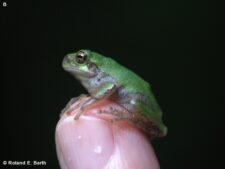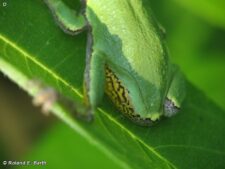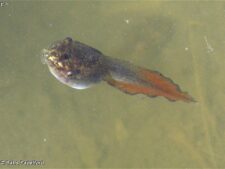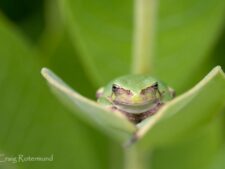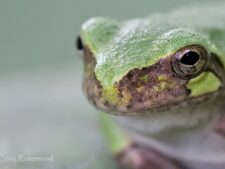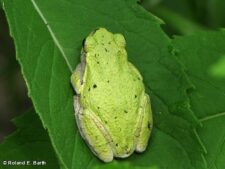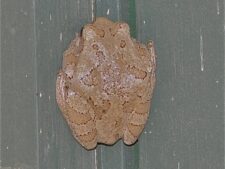
When first metamorphosed from a tadpole (E,F) in June or July this native tree frog has a body length of less than 1 inch, green above and light gray below (B). At that age the insides of its thighs are gray as well (C). Later in the season and at maturity, it reaches about 2 inches in length, with golden thighs called a “flash pattern” (D), which helps to startle predators as they flee. At that age they may be green, chartreuse, tan, or gray above with small warts (I, M). All color variations have a rectangular light patch below the eye (A,B,L).
These frogs are mostly seen on the flood plains near water and in moist ravines, sitting on large leaves from May through September. They were common during the summer of 2008 on the flood plain in Fontenelle Forest. The bright green frogs are easier to spot than the grey ones. These frogs hibernate during winter, often under dead logs, and they may live up to 7 years. In 2012, after a record warm March, a young frog of this species was seen on the 10th of April.
The Eastern Gray Tree Frog (Hyla versicolor), looks identical and can only be differentiated by chromosome analysis. Prof. Dennis Ferraro, herpetologist at the University of Nebraska at Lincoln, verified recently (2008) that of the two only the species described here has been identified in Nebraska.
The content of NatureSearch is provided by dedicated volunteer Naturalists of Fontenelle Forest who strive to provide the most accurate information available. Contributors of the images retain their copyrights. The point of contact for this page is: Roland Barth.

